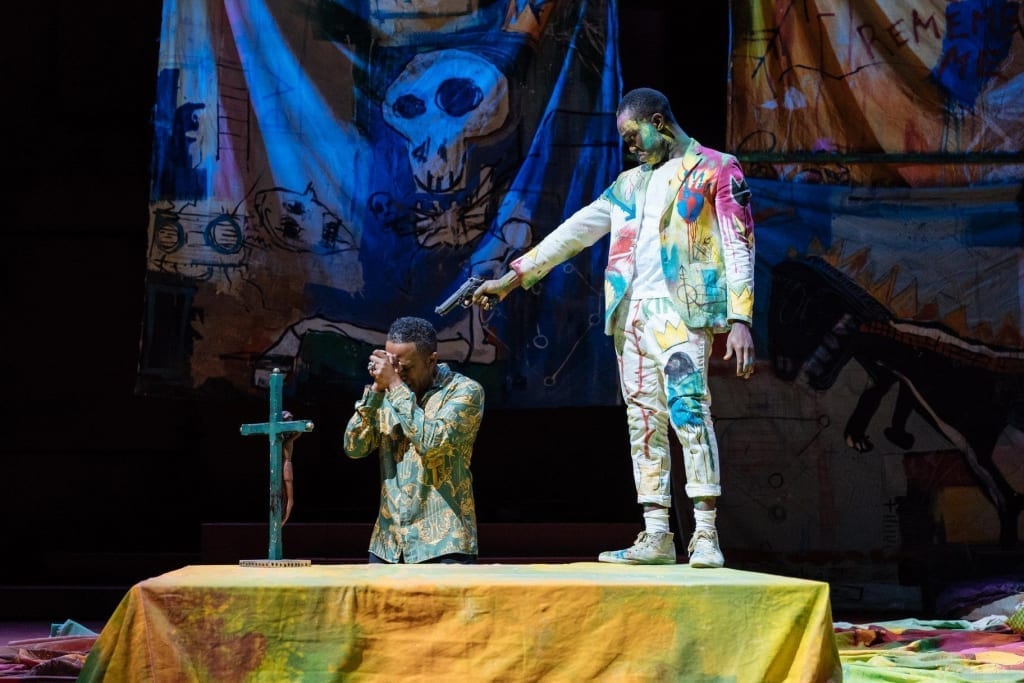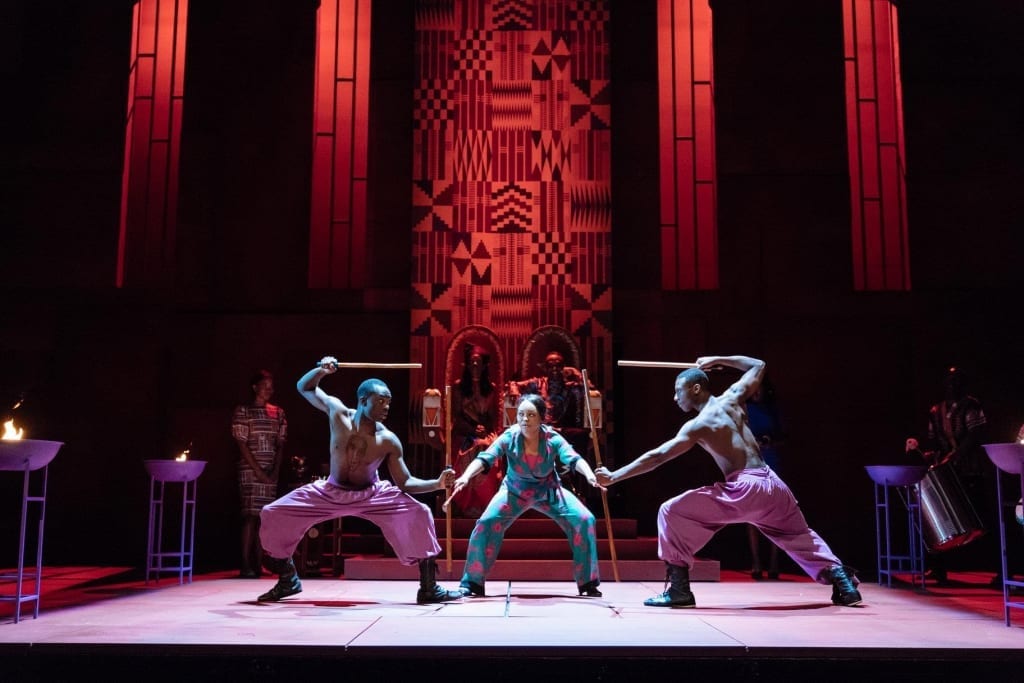It is often hard to do Hamlet – first performed around four hundred years ago, and one of Shakespeare’s most enduringly popular plays – in a new and exciting way. Yet Simon Goodwin’s production, with its brilliant cast – consisting of mainly black actors – rises to the challenge. First performed in 2016, this RSC production is completing a nationwide tour, with Paapa Essiedu remaining in the title role.
The decision to transfer Denmark’s corrupt court into an unspecified contemporary African country imbues the play with a new-found sense of vigour and poignancy. The play opens in a brightly-lit auditorium for Hamlet’s graduation from the University of Wittenberg, firmly grounding the production from the first moment in a modern setting which in turn makes the plot of ghosts, murder, and revenge more distressing. The influence of the new setting is evident throughout the production, from its haunting music and powerful use of drums to the aesthetic of the costumes and set design.

The use of red and orange tones in the set and lighting solidify the impression of being in a hot country, as well as underscoring the dramatic tensions of the play. The striking and vibrant visuals contrast brightly coloured chaotic paint splatters and politically-engaged graffiti with a threatening military theme and luscious royal set pieces. The throne room, in which a large domineering portrait of Claudius in military garb looms above a seated Gertrude, is a particularly memorable setting. There is also a sense of urgency throughout, as most of the action is underscored by the ominous, pounding drum beat or harmonious, siren-like singing.
This production is successful because it manages to be both thematically and aesthetically coherent, built upon a solid foundation of textual understanding. The clarity with which Shakespeare’s sometimes confusing or outdated lines are delivered endows the play with a sense of accessibility, allowing the audience to follow and comprehend the action and feelings conveyed on stage. Through this, it becomes abundantly obvious to the audience that in this production Hamlet is merely feigning madness, while being completely in possession of his wits. The metatheatrical portrayal of Hamlet as an actor of lunacy is emphasised by his change in costume. When he is grieving yet mentally sound at the beginning of the play he is clad in an all-black ensemble. After his encounter with the ghost of his father he dons an all-white costume covered in multi-coloured paint splatters that carry through onto his face and hands – suggesting that his madness is artificial and performative. The juxtaposition in Hamlet’s costume change conveys his internal transformation as he vows his revenge which he will achieve through a façade of madness.
Ewart James Walters gives a standout performance as the ghost of the King. He has a strong, domineering stage presence: clad in traditional robes, his voice booms and echoes throughout the theatre as he, tall and overbearing, looms above Hamlet, who kneels in his presence. Mimi Ndiweni, too, is a powerful Ophelia, carrying off the pivotal madness scenes memorably and poignantly as she switches from outbursts of violence to heart-broken singing.

Vibrant, coherent, and utterly gripping, this production of Hamlet is fast-paced and energetic. Rising star Essiedu, with his animated physicality, powerful delivery of verse, and strong connection to the character of Hamlet, ties the whole production together. The bold choice to transpose Hamlet, a story of a corrupt European court, into an indeterminate African setting is a triumph, making Goodwin’s production stand out against the multitude of past productions. In a time when geopolitics is a constant concern for all, this revitalised Hamlet encourages its audiences to reflect on both the play, and its enduring themes of corruption and greed, with a new-found perspective.

